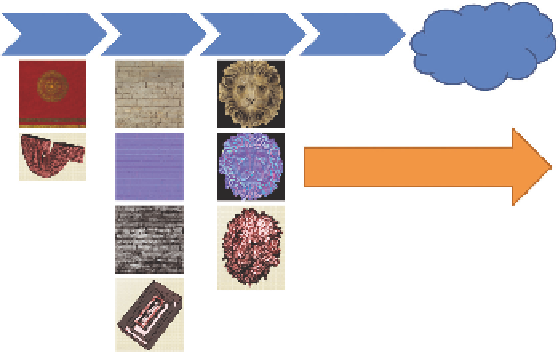Graphics Reference
In-Depth Information
Moreover, shading can share the same material system that is used in a de-
ferred shading rasterizer. Consequently, our method allows for a unified rendering
architecture that supports both rasterization and ray tracing. The more expen-
sive ray tracing can easily be restricted to complex phenomena that require it,
such as reflections and refractions on arbitrarily shaped scene geometry. Steps in
rendering that do not require the tracing of incoherent rays with arbitrary origins
can be dealt with using rasterization as usual.
2.1.1 The Classic Divide between Rasterization and Ray Tracing
Ray tracing is a robust and flexible approach to image synthesis that elegantly
solves many problems that are hard to solve using rasterization. Since light typ-
ically travels in straight lines, most light transport problems can be decomposed
into finding the next point along a straight line, starting at a point that emits
or receives light. The ability to determine intersections with the scene geome-
try for arbitrary rays therefore allows for a trivial implementation of many light
transport phenomena.
Recent advances in the performance and flexibility of graphics processing
hardware have made ray tracing a viable option even for real-time rendering
applications. Yet, integrating ray tracing into existing rasterization-based real-
time rendering solutions poses significant challenges. Modern rasterization-based
rendering engines (Figure 2.2) typically use the capabilities of modern GPUs to
generate, transform, and amplify geometry on the fly. In contrast, ecient ray
tracing techniques typically depend on pre-built spatial acceleration data struc-
tures that allow for fast random access to the scene geometry (Figure 2.3).
Curtains
Wall
Lion
...
Rasterizer
Linear Data Access
Figure 2.2.
Linear batch-based rendering. A rasterizer sequentially iterates over all
primitives and their resources to project them onto the image plane.









